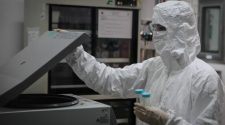This post is a part of a series on Science For Justice
“I have to tell you something” he said to my father on the phone. My father could sense immediately the conversation would be pivotal. “Cancer?” my father asked, to which he quietly responded, “Much worse.” He was my mother’s uncle; he was hilarious, hardworking, and passionate. He was also a gay Armenian man, and his sexual orientation was a subject of shame, criticism, and volatility in many cultures like my own. It was 1989, and the public, including my father, knew little about human immunodeficiency virus or HIV. Within days of this phone call, my parents flew to see him. I often think about this moment and my mother’s uncle considering his diagnosis the worst news he could possibly share. I think about the shame he felt and the vulnerability he displayed in sharing his status. This moment of sheer vulnerability and honesty has been shared by over 36 million individuals and their families worldwide.
Disproportionate impacts on already vulnerable communities
Despite significant advancements in the understanding of HIV over the past thirty years, the epidemic disproportionately affects disenfranchised communities. The health disparities are striking, affecting communities of color (Black and Latinx people account for more than sixty percent of cases), sexual minorities, and the intersection of these communities (Black gay males account for about half of cases). A number of crucial risk factors have been identified, including poverty, substance use, low educational attainment, unequal access to health care, and discrimination. These disparities are present not only in the transmission of the disease, but in the diagnosis and treatment as well. Research has shown that compared to non-Hispanic whites, racial/ethnic minorities have a higher likelihood of virologic failure and resistance; being prescribed less efficacious and more toxic treatment regimens; brain and cognitive impairments; poorer quality of life; and early mortality. Additionally, racial/ethnic minorities report experiencing discriminatory health care experiences and overall distrust toward health care providers. The access to quality care in these communities is heavily impacted by a number of social, environmental, and psychological factors.
The two-pronged approach to reducing disparities
The HIV epidemic is unique in that transmission is dependent on both behavioral risk factors and the federal government’s historical role in the silencing and marginalization of minority populations. Though significant public health advancements and advocacy efforts have been made over the course of the epidemic’s history, these benefits have not necessarily been shared equally throughout the U.S. population. In order to better conceptualize and treat this syndrome, a two-pronged approach is needed to better integrate research findings with social justice efforts. First, research will continue to aid in the identification of risk factors and protective factors to prevent further damage. Second, policymakers and organizations must integrate these findings and mobilize in order to combat social injustice and properly communicate this information to all.
Advocating for compassionate, accessible and equitable care
Research has shown that discrimination is a major barrier to care and facilitates the transmission of HIV and disease progression. Currently, explicit protections against discrimination based on sexual orientation/gender identity do not exist at the federal level, which can lead to significant problems in accessing health care. More than a third of LGBTQ+ people of color have been refused treatment and/or feel scared to access health care resources due to fear of discrimination. This results in low accessibility of care and subsequently worse health outcomes. Organizations such as the Prevention Access Campaign work to devise equity initiatives such as U=U (Undetectable=Untransmittable), a global community of advocates and researchers working to disseminate the crucial finding that individuals on effective treatment with an undetectable level of HIV in their blood have a negligible risk of transmitting HIV sexually. This may assist in the eradication of the stigma associated with sexual disease transmission and encourages diagnosed individuals to remain adherent to treatment regimens to keep both themselves and their partners healthy. It is crucial to continue to combine research findings with advocacy work in order to bring together professionals from a number of sectors to increase communication, understanding, and prevention of further risky behavior.
HIV can be characterized as a syndrome with two faces. The face of the disease we see corresponds to the physical and cognitive burden associated with the diagnosis of a chronic disease. The second, and arguably more important part of the syndrome is a masked face tucked behind the first, corresponding to the internal turmoil, which includes enduring stigma, shame, and discrimination. Stigma is considered a major predictor of mortality within this population and serves as a barrier to accessing both HIV testing and treatment.
It was this masked face that led my mother’s uncle to respond with “much worse” and it was this face that had kept his life, sexual orientation, and diagnosis a secret from everyone he loved. Resiliency in this community is the pulsing, beating heart allowing them to overcome adversity, despite this diagnostic label. This resiliency has been tested repeatedly, yet this community has continued to laugh, sing, advocate, and share their experiences, shining bright and dispelling the grim social pressures casting a shadow on their lives. The time has come for the American people to enact change; let us collectively stand behind a relentlessly strong community who need not hide behind any mask.
Maral Aghvinian is a doctoral student at Fordham University in the Bronx, NY specializing in clinical neuropsychology. Her research interests include the intersection between neurocognitive functioning, health behaviors, cross-cultural issues, and health disparities in highly stigmatized, chronic disorders. Maral’s primary goal is to use a biopsychosociocultural framework to better understand the relationship between the role of stigma and factors that contribute to disparate health outcomes in underrepresented populations. By conducting clinically informed research, she hopes to eradicate the climate of stigma surrounding mental health, especially in marginalized groups.
Science Network Voices gives Equation readers access to the depth of expertise and broad perspective on current issues that our Science Network members bring to UCS. The views expressed in Science Network posts are those of the author alone.
Posted in: Science and Democracy
Tags: discrimination, disproportionate impacts, equity, public health, racial discrimination, Science For Justice, vulnerable populations
Support from UCS members make work like this possible. Will you join us? Help UCS advance independent science for a healthy environment and a safer world.


















